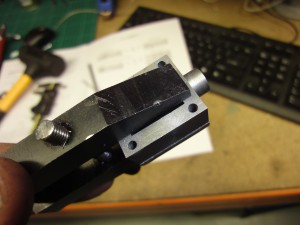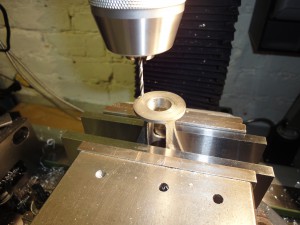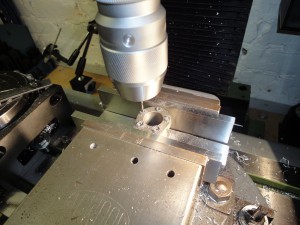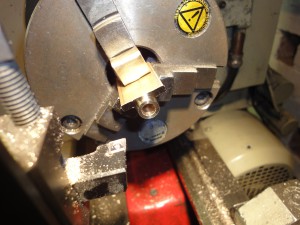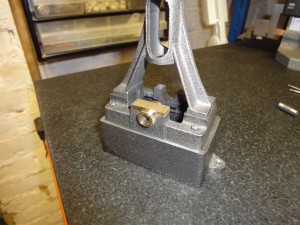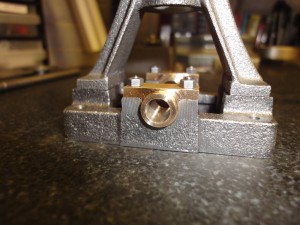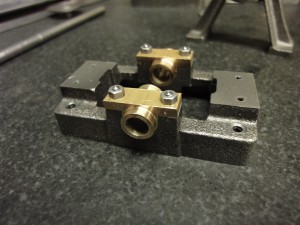First steps – clean the boxbed up with a Dremel and a file to get rid of any casting flash.
Mount in the 4-jaw. I’m using brass sheet to protect the casting. Doesn’t have to be super concentric, as long as it’s fairly well balanced.
Facing off – I’m using a tipped tool here and 320 RPM. Seems alright to me ! I cut .20mm at a time, with a .10mm finishing cut.
Once faced, flip over in the chuck, ensure it’s seated nicely, and face the top.
Quick check with the height gauge.



































